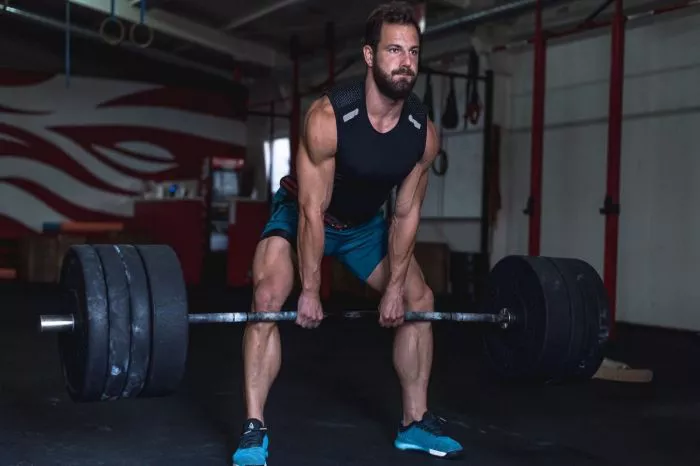Determining the “best” type of gym workout is subjective and depends on individual goals, preferences, fitness level, and overall health. There is no one-size-fits-all approach to gym workouts, as different exercise modalities offer unique benefits and cater to diverse fitness objectives. Whether the goal is to build muscle, improve cardiovascular health, enhance athletic performance, or lose weight, choosing the right type of gym workout requires careful consideration of various factors. In this comprehensive exploration, we delve into different types of gym workouts, their characteristics, benefits, and practical considerations to help individuals make informed decisions based on their specific needs and objectives.
Types of Gym Workouts
Strength Training: Strength training involves resistance exercises designed to increase muscle strength, power, and endurance. It typically involves lifting weights, using resistance bands, or performing bodyweight exercises to target specific muscle groups. Strength training workouts may focus on compound exercises, isolation exercises, or a combination of both to improve overall muscular development and functional strength.
Cardiovascular Training: Cardiovascular training, also known as aerobic exercise, involves activities that elevate the heart rate and improve cardiovascular fitness. This includes activities such as running, cycling, swimming, and using cardio machines such as treadmills, ellipticals, or rowing machines. Cardio workouts are effective for burning calories, improving endurance, and enhancing heart health.
High-Intensity Interval Training (HIIT): HIIT workouts involve alternating between short bursts of high-intensity exercise and periods of rest or low-intensity activity. HIIT workouts can be performed with various exercises, including bodyweight movements, plyometrics, and cardio exercises. HIIT is known for its efficiency in burning calories, improving cardiovascular fitness, and boosting metabolism.
Flexibility and Mobility Training: Flexibility and mobility training focuses on improving joint range of motion, flexibility, and muscular balance. This includes exercises such as stretching, yoga, Pilates, and mobility drills aimed at increasing flexibility, reducing muscle stiffness, and preventing injuries. Flexibility training is essential for maintaining joint health and improving overall movement quality.
Functional Training: Functional training emphasizes exercises that mimic real-life movements and activities, focusing on improving strength, balance, coordination, and stability. This includes exercises such as squats, lunges, deadlifts, kettlebell swings, and medicine ball throws that engage multiple muscle groups and improve functional movement patterns.
Characteristics and Benefits of Each Type of Gym Workout
Strength Training:
Characteristics: Focuses on lifting weights or resistance exercises to increase muscle strength and size.
Benefits:
Builds muscle mass and strength.
Increases bone density and joint health.
Boosts metabolism and aids in weight management.
Improves functional strength and athletic performance.
Cardiovascular Training:
Characteristics: Involves aerobic activities that elevate heart rate and improve cardiovascular fitness.
Benefits:
Burns calories and aids in weight loss.
Improves heart health and reduces the risk of chronic diseases.
Increases endurance and stamina.
Enhances mood and reduces stress levels.
High-Intensity Interval Training (HIIT):
Characteristics: Alternates between short bursts of high-intensity exercise and rest or low-intensity activity.
Benefits:
Burns calories and fat more efficiently than traditional cardio.
Improves cardiovascular fitness and anaerobic capacity.
Increases metabolic rate and calorie burn post-workout.
Requires less time to achieve similar or better results compared to steady-state cardio.
Flexibility and Mobility Training:
Characteristics: Focuses on stretching, yoga, Pilates, and mobility exercises to improve joint range of motion and flexibility.
Benefits:
Reduces muscle tension and improves posture.
Enhances joint mobility and flexibility.
Prevents injuries and improves recovery from workouts.
Promotes relaxation and reduces stress.
Functional Training:
Characteristics: Emphasizes movements that replicate real-life activities and improve overall movement quality.
Benefits:
Enhances functional strength, balance, and coordination.
Improves sports performance and reduces the risk of injury.
Increases core stability and overall body awareness.
Helps individuals perform daily tasks more efficiently.
Practical Considerations for Choosing the Best Gym Workout
Identify Fitness Goals: Determine specific fitness goals, such as building muscle, improving cardiovascular health, losing weight, or enhancing athletic performance, to guide the selection of the most appropriate type of gym workout.
Consider Individual Preferences: Take into account personal preferences, interests, and exercise experience when choosing a gym workout. Select activities that are enjoyable and sustainable in the long term to maintain motivation and adherence.
Assess Fitness Level: Consider current fitness level and physical capabilities when selecting a gym workout. Start with exercises and intensities that are suitable for individual fitness levels and gradually progress as strength, endurance, and confidence improve.
Balance Variety and Consistency: Incorporate a variety of gym workouts to target different aspects of fitness and prevent boredom and plateaus. At the same time, maintain consistency and frequency in workouts to achieve desired results over time.
Listen to Your Body: Pay attention to signs of fatigue, discomfort, or pain during workouts and adjust intensity, volume, or exercises accordingly. Prioritize rest, recovery, and proper nutrition to support optimal performance and prevent overtraining.
Seek Professional Guidance: Consult with fitness professionals, such as personal trainers, exercise physiologists, or physical therapists, to develop personalized workout plans and receive guidance on exercise selection, technique, and progression.
Conclusion
Choosing the “best” type of gym workout involves considering individual goals, preferences, fitness level, and overall health. Different types of gym workouts offer unique benefits and cater to diverse fitness objectives, whether it’s building muscle, improving cardiovascular health, enhancing athletic performance, or losing weight. By understanding the characteristics, benefits, and practical considerations of various types of gym workouts, individuals can make informed decisions and create workout routines that align with their specific needs and objectives. Ultimately, the “best” gym workout is one that is enjoyable, sustainable, and helps individuals achieve their fitness goals effectively and safely.
Related Topics:
10 Free Weight & Dumbbell Leg Exercises for an Effective Workout
What are the big 5 gym exercises?
10 Free Weight & Dumbbell Leg Exercises for an Effective Workout


